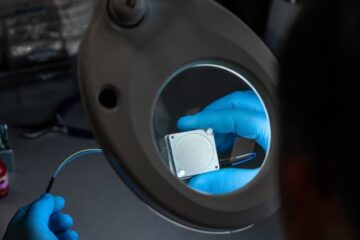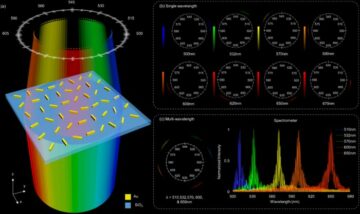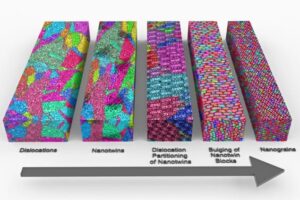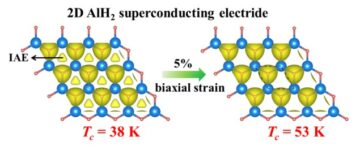
By colliding heavy ions, physicists in the US have created five previously unseen nuclear isotopes. Led by Oleg Tarasov at Michigan State University, the team identified the nuclei in the debris produced by the fragmentation of platinum-198.
Nearly 300 naturally occurring isotopes are known to physicists, with about 250 of these being stable. Researchers have also created about 3000 short-lived isotopes at labs like the Facility for Rare Isotope Beams (FRIB), which is an accelerator-based institute at Michigan State University.
Short-lived isotopes also occur naturally in violent astrophysical events such as supernovae and neutron star mergers. In these events, some of these isotopes are thought to be involved in the rapid neutron-capture process (r-process), which makes heavy elements such as gold.
Tiny fraction
“The number of natural isotopes is a tiny fraction of the possible isotopes and a tiny fraction of the number that exist in extreme astrophysical environments with active nuclear reactions,” Tarasov explains. “A fundamental question is: what combinations of protons and neutrons can form an atomic nucleus or a rare isotope?”.
Answering this question is one goal of FRIB, which creates isotopes by smashing heavy ion beams into targets at energies up to 200 MeV. Thanks to the latest increase in beam power, the facility is now poised to provide unprecedented access to heavy, neutron-rich isotopes in as-yet unexplored regions of the nuclear chart.
For Tarasov’s team, one region of particular interest contains isotopes slightly lighter than lead-208. Until now, these nuclei have proven challenging to study due to low production yields in experiments, combined with the difficulty in distinguishing between different nuclei.
Projectile fragmentation
With FRIB, “heavy isotopes with many more neutrons than protons can be produced by projectile fragmentation, where a heavy stable beam such as a natural isotope of platinum is smashed into a carbon target at half the speed of light,” Tarasov explains.
To find new isotopes, the researchers faced a two-fold task: to sort the fragmentation debris according to the different isotopes it contains, and to unambiguously identify each isotope. These challenges were overcome using the Advanced Rare Isotope Separator (ARIS) at FRIB.

Biggest expansion of known chemical universe targeted by FRIB nuclear facility
Altogether, the team’s fragmentation experiment yielded five different isotopes of the elements thulium, ytterbium, and lutetium, which had never been observed before.
“The successful identification of these isotopes showcases the high-resolution capabilities of the ARIS fragment separator and its potential for future discoveries in the high-Z region of the periodic table, especially as beam intensity increases,” says Tarasov.
The team is confident that its results are just the start of an exciting new era for fragmentation experiments. “This was accomplished less than a year after FRIB operations started, and promises great science potential when performing similar measurements with lead and uranium fragmentation,” Tarasov continues.
In future experiments, Tarasov and colleagues will aim to produce nuclei containing 126 neutrons. This is a “magic number” and these nuclei are expected to be more stable than their neighbours in the nuclear chart. This makes them an important target for astrophysicists in their studies of the r-process. So, future research could give us a better understanding the origins of around half of all the elements in the universe heavier than iron.
The research is described in Physical Review Letters.
- SEO Powered Content & PR Distribution. Get Amplified Today.
- PlatoData.Network Vertical Generative Ai. Empower Yourself. Access Here.
- PlatoAiStream. Web3 Intelligence. Knowledge Amplified. Access Here.
- PlatoESG. Carbon, CleanTech, Energy, Environment, Solar, Waste Management. Access Here.
- PlatoHealth. Biotech and Clinical Trials Intelligence. Access Here.
- Source: https://physicsworld.com/a/frib-finds-five-new-isotopes-in-platinum-fragments/
- :is
- :where
- $UP
- 135
- 200
- 250
- 300
- 3000
- 4
- 90
- a
- About
- access
- accomplished
- According
- active
- advanced
- After
- aim
- All
- also
- an
- and
- ARE
- around
- AS
- At
- BE
- Beam
- been
- before
- being
- Better
- between
- by
- CAN
- capabilities
- carbon
- challenges
- challenging
- Chart
- chemical
- colleagues
- combinations
- combined
- confident
- containing
- contains
- continues
- could
- courtesy
- created
- creates
- cryogenic
- described
- different
- Difficulty
- due
- each
- elements
- environments
- Era
- especially
- events
- exciting
- exist
- expansion
- expected
- experiment
- experiments
- Explains
- extreme
- faced
- Facility
- factory
- Find
- finds
- five
- For
- form
- fraction
- fragmentation
- fundamental
- future
- Give
- goal
- Gold
- great
- had
- Half
- Have
- heavy
- high-resolution
- HTTPS
- Identification
- identified
- identify
- important
- in
- Increase
- Increases
- information
- Institute
- interest
- into
- involved
- issue
- IT
- ITS
- jpg
- just
- known
- Labs
- latest
- lead
- Led
- less
- light
- lighter
- like
- Low
- MAKES
- many
- max-width
- measurements
- mergers
- MEV
- Michigan
- more
- Natural
- naturally
- Neutron star
- neutrons
- never
- New
- now
- nuclear
- number
- observed
- occur
- occurring
- of
- ONE
- Operations
- or
- origins
- Overcome
- particular
- performing
- periodic
- Physics
- Physics World
- plant
- platinum
- plato
- Plato Data Intelligence
- PlatoData
- poised
- possible
- potential
- power
- previously
- process
- produce
- Produced
- Production
- promises
- protons
- proven
- provide
- question
- rapid
- RARE
- reactions
- region
- regions
- research
- researchers
- Results
- review
- says
- Science
- showcases
- similar
- slightly
- So
- some
- sort
- speed
- stable
- Star
- start
- started
- State
- studies
- Study
- successful
- such
- table
- Target
- targeted
- targets
- Task
- team
- than
- thanks
- that
- The
- their
- Them
- These
- this
- thought
- thumbnail
- tiny
- to
- true
- two-fold
- understanding
- Universe
- university
- unprecedented
- until
- us
- using
- was
- were
- What
- when
- which
- will
- with
- world
- year
- year after
- yielded
- yields
- zephyrnet












